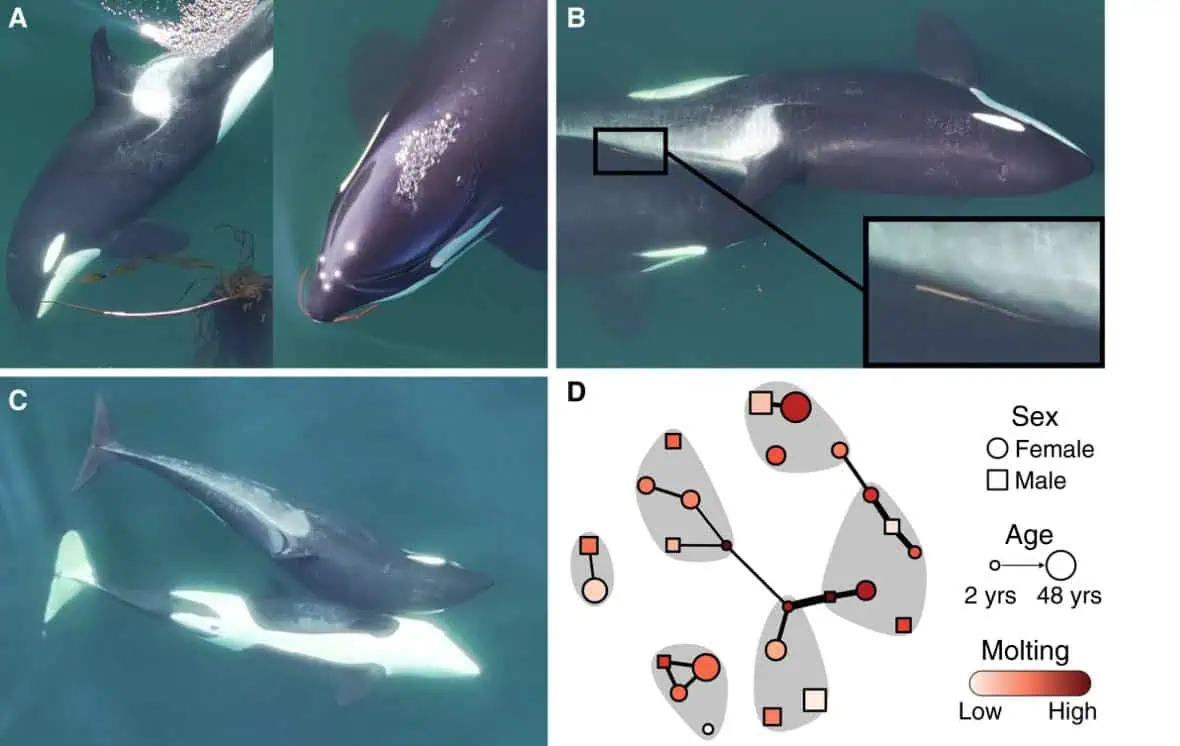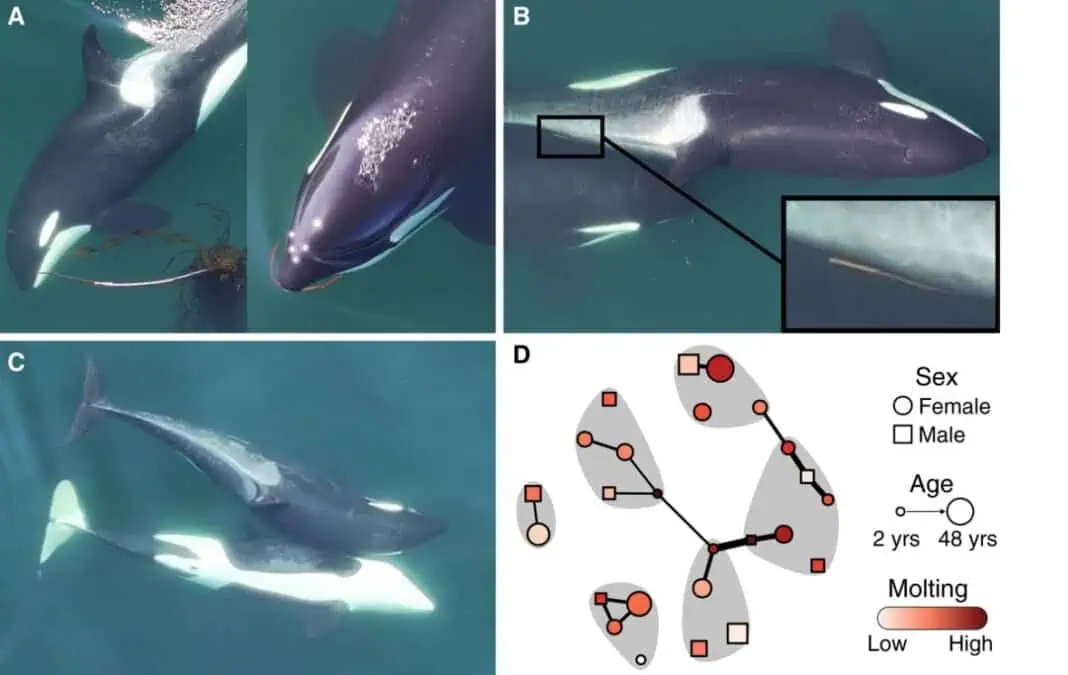Scientists recently released a report that chronicles killer whales using kelp to groom each other.
From April to July 2024, scientists flew an airborne drone over southern resident killer whales in the central Salish Sea off the Pacific Northwest coast. According to the report, published in Current Biology:
“We observed whales fashioning short lengths of bull kelp (Nereocystis luetkeana) stipe from complete stalks, positioning the stipe between themselves and a partner, and then rolling the kelp along their bodies (Figure 1A–C). Cetaceans are often observed with kelp draped over their bodies, a behavior called ‘kelping.’ This newly described behavior, in which whales kelp with the aid of a social partner (and which may be a social elaboration on kelping behavior), we will thus call ‘allokelping.’“

The scientists documented 30 instances of this “allokelping” during eight of the 12 days the drone was flown. It took place across all age and gender classes.
“We observed whales acquiring stipe segments for allokelping on eight occasions. On seven of these occasions, the length of stipe was fashioned from an intact stalk; in the remaining observation the whale retrieved a suitable segment from a floating kelp mat. Whales fashion lengths of kelp stipe for allokelping by using their teeth to grab a kelp stalk by the narrow end of the stipe near the holdfast. They then use the kelp’s drag, the motion of their body and their teeth to separate a short length of the kelp stipe.”
After that, scientists watched the whales approach each other and use the kelp like a loofah, rubbing it between themselves.
This wasn’t like a play session where they would try to keep the kelp away from one another, according to the report.
“We hypothesize that allokelping is similar to skin maintenance behaviors exhibited by other cetaceans, where exaggerated S-poses are used to achieve contact with exfoliating surfaces (e.g. stones or sand). Unlike southern resident killer whales, northern resident and some Alaskan resident killer whales rub themselves on smooth pebble beaches, though the function of this behavior is not well established.
“Allokelping may be a form of social skin maintenance, making it an example of tool-assisted allogrooming. Social skin maintenance (e.g. flipper-to-body contact to remove dead skin) has been reported in cetaceans; however, tool use for this purpose has not been documented in this taxon. Reports of tool-assisted allogrooming are largely limited to primates, where observations are rare and typically occur in captivity.”
Check out the full report here.

